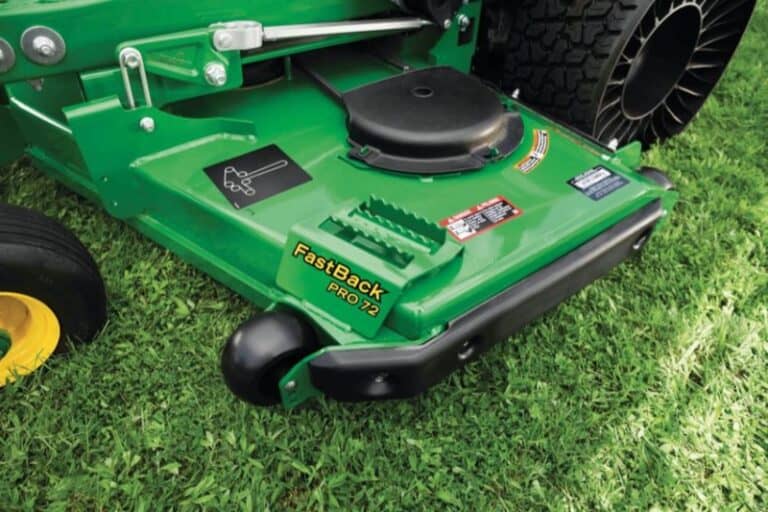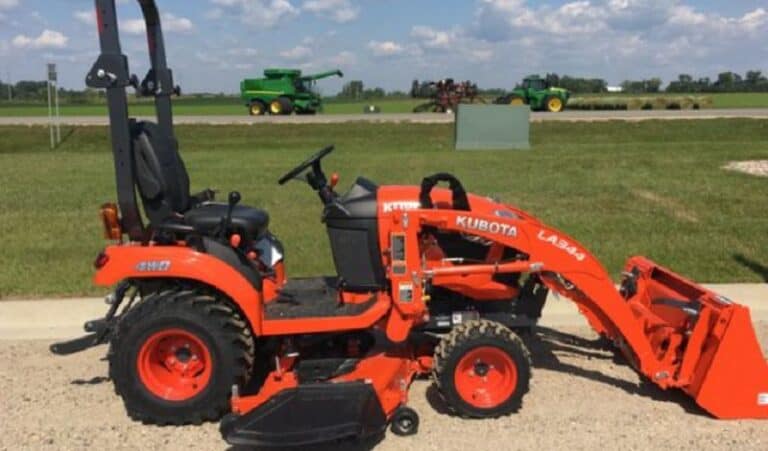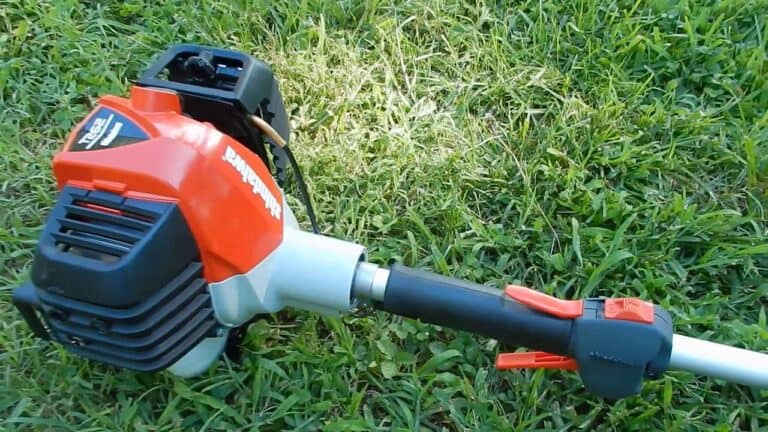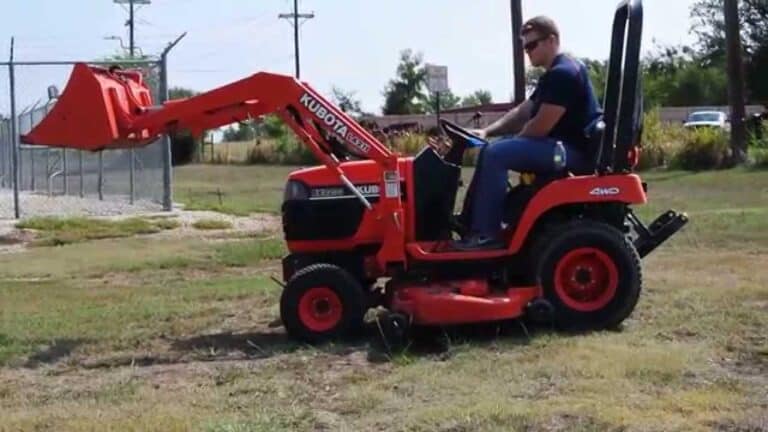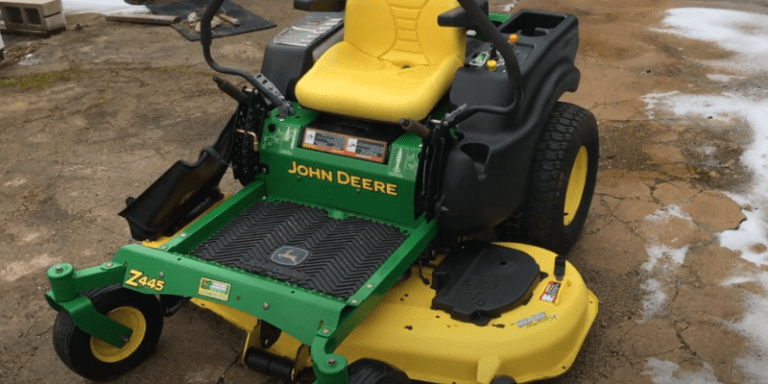Common Problems Associated With the John Deere LX277

John Deere lawnmowers are popular choices for homeowners and contractors alike. They’re heavy-duty, powerful, and have proven track records. They cut grass fast, get good reviews, and they’re built to last.
The mower may run into problems just like some other machines. That’s why we’ve done the research and found the 6 most common problems with the John Deere LX277 lawnmower – along with the solutions to get you back on track again.
6 Common John Deere LX277 Problems with Solutions
1. Trouble with the Engine Stalling
Several JD LX277 owners have stated that their mowers sometimes slow down or cease working altogether. No need to panic; this is only an example of the common issue of an engine stop. You may have noticed that the engine dies within 1 minute after turning on the Tractor. However, there won’t be any issues with the mower’s performance unless you activate the PTO.
A few potential causes of this stalling issue include a cheap battery, a faulty power amplifier, or a faulty power take-off (PTO). You don’t need any help from anybody else to correct them.
Initially, make sure the battery is still good. Simply bring your lawnmower or battery pack to your neighborhood assembly station, and they will inspect it at no cost to you. Make sure to swap out the battery if it’s acting up.
Next, have the voltage converter tested. With the engine revving to its maximum, the converter’s output voltage must be approximately 14V. A voltage reading lower than 14V indicates a faulty charge controller, which will need to be replaced.
Finally, examine the PTO heating coil resistivity. If it is insufficient, you have identified the primary person responsible for the engine stalling issue with the LX277. Put in a new coil, and everything will be good.
2. Having Trouble Getting Going
Even though everything was functioning correctly, several consumers reported that their JD LX277 required a little perspiration before it would turn on.
The LX277 faults with starting difficulty that is prevalent among mowers. However, here’s some encouraging news for everyone affected by this issue.
You don’t have to spend any money to solve this issue, and you can even do it on your own. For example, changing the fuel filter is as simple as cleaning the existing one.
Small amounts of gasoline might accumulate in the fuel system throughout time owing to vaporization or pressure. If you can get the gas back into the reservoir, you won’t have to worry about the engine not starting.
Initially, you’ll need to unhook the clap from the gasoline line and retract the pipe. Then, after some time, you’ll need to grip the hose and manually force air through it.
A compressor may be used in this situation; doing so will cause the filtration system to inflate somewhat. You should keep the pressure in the pump at 55-60 psi the whole time you operate it.
3. Problem with Motor Surge
Some customers also experienced motor spiking at greater speed and occasionally at loading, which is similar to the stalling issue. When the gear is in default, you can find that your speed increases.
Surges in motor current may also lead a vehicle to suddenly slow down. On the other hand, if your youngster isn’t running about the lawn when you’re cutting, this ongoing challenge may be a manageable one.
There are three common causes of engine spiking and running in farm equipment: air leaks, faulty fuel injection, and malfunctions in the regulator mechanism.
Prior to doing anything else, be sure there are no air escapes. If you detect a leak or many leaks, you’ll need to go out and buy a vacuum pump, either brand new or secondhand. As simple as that, you may improve your mower’s performance and effectively combat the growing problem.
Inspecting the fuel supply tank and keeping an eye on the pump’s output is also essential. For example, a surging engine may be fixed by checking the fuel pressure and replacing the fuel tank if it’s off.
In conclusion, you should see whether the regulator needs to be adjusted. First, the regulator’s arm must be loosened just a little so it can spin freely on its base. You may examine the governor and carburetor connection in this method.
After a careful examination, if you see any problems, contact your supplier to schedule maintenance. This isn’t something most people can do on their own, and you shouldn’t put your safety in danger if you try.
4. The Belt on the Deck Keeps Falling Off
Some people have noticed that the deck belt keeps coming loose; this is a potentially hazardous situation. In spite of the rarity of the issue, you must educate yourself on it.
That’s the only cause you need to know it. Since there is no way to avoid this issue, you should know how to treat it. In order to get to the point, you’ll have to take the mower deck off of the John Deere. Once the deck is gone, you may put the belt where it belongs.
5. Overheated Engine
There are a number of causes of lawn mower engine overheating, including operating the mower at a high pace at resting, not using enough oil, having broken cooling vents, and using low-quality oil.
If your engine is subjected to an unreasonable amount of strain, lightening the pressure is the solution. Check the fuel level and replace it if necessary.
If your evaporator coils need to be fixed, it may be time to wipe down the contaminated parts. Finally, slow down that resting speed by adjusting the resting ratio adjustment on the carburetor.
6. Increased Fuel Usage
Inconveniences like these are common with John Deere lawn tractors. There are two possible explanations for increased fuel usage. First, the carburetor needs to be adjusted appropriately, or the accelerator may require to be opened properly.
Alternatively, you may change the clutch wire if the accelerator moves smoothly. Finally, if you suspect that the carburetor isn’t really set up correctly, you may also inspect the overflow setup.
Conclusion
You need not worry about any issues raised earlier; any individual may resolve them. The guarantee will pay the expenses, even if the issue requires inspection by a professional.
In terms of value and efficiency, it’s among John Deere’s finest mowers. Choose the John Deere LX277 if you need a tractor that survives for generations.
You can also read:

